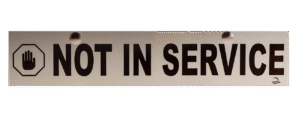This week, I had the opportunity to debate the topic: Has technology led to a more equitable society? I didn’t feel particularly strong about either side at first, so being assigned the remaining position turned out to be a blessing in disguise as it pushed me to dig deep, do my research, and build a solid case from the ground up.
At first glance, I instinctively thought, Of course it has! Technology has made huge strides over the years, and many of those changes have been for the better. There are countless apps, tools, and platforms available to support people in every area of life, especially in education. Students now have access to apps for nearly anything they want to learn or do.
One point the pro side made was that technology acts as a gateway, even if access isn’t equal, really stuck with me. It’s true that not everyone has the same access, but having some access is still better than none. They also argued that comparing access across divisions, cultures, or rural and urban settings doesn’t always make sense because those differences are already built in. I appreciated their perspective, especially their point about how technology allows for global collaboration across cultures and communities, which was supported by the following article.
That said, I do think there are certain comparisons that should be made, like urban to urban or rural to rural. Communities in similar settings should have similar levels of access, but that’s not always the case. Indigenous communities, for example, often still face significant digital barriers. The article from the Assembly of First Nations highlights how many communities lack the basic infrastructure for high-speed internet. It’s frustrating to see such a deep digital divide still exist within our own country. Jill’s video further emphasized this reality and showed just how many people are still being left behind.

Photo by flutie8211 on Pixabay
So, while I agree that technology has made society more equitable in certain ways, there’s still a long way to go. Personally, I find myself leaning more toward the disagree side mainly because so many groups continue to be overlooked in this digital transformation.
Kudos to the pro side for presenting such thoughtful arguments and challenging my thinking throughout the debate!



